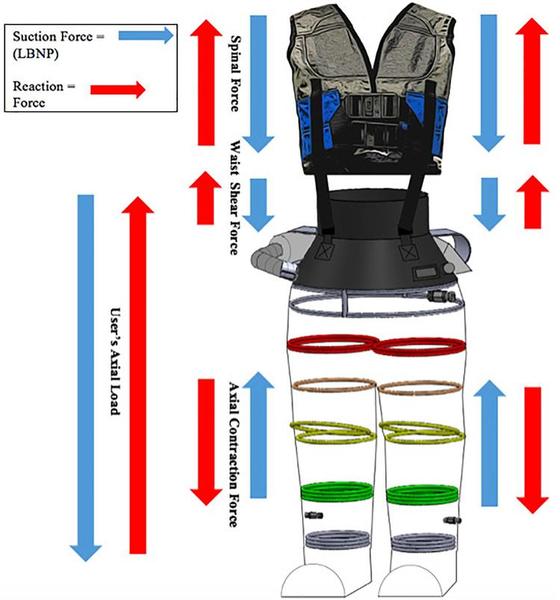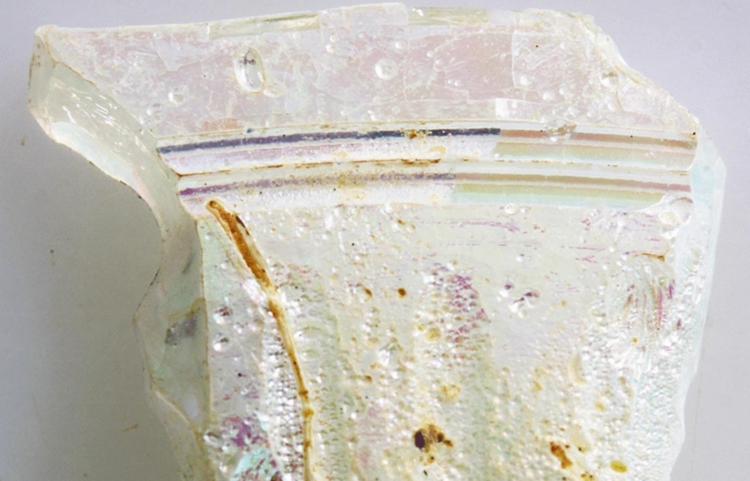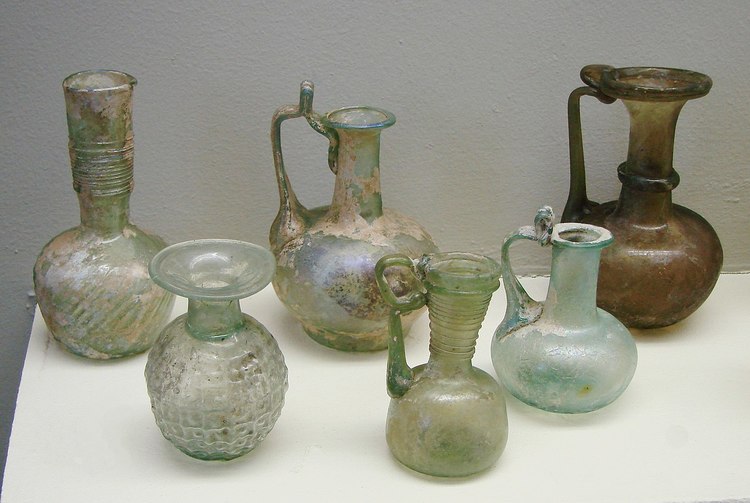RealClearScience Quick and Clear Science
Brief and Straightforward Analysis of the Latest Research
"Avocado Hand": As the Fruit Soars in Popularity, So Do Gruesome Injuries
Over the last decade, emergency room physicians started noticing it more and more... Patients, primarily in their early thirties, coming in with grisly knife injuries to their non-dominant hands, almost all of which required surgical repair. Each time, the cause was the same – they were slicing an avocado.
The trend has since garnered a name: "Avocado Hand," and deservedly so. A study published earlier this year to the American Journal of Emergency Medicine found that between 1998 and 2017 there were an estimated 50,413 avocado-related knife injuries in the United States. The bulk of those – 27,059 – occurred between 2013 and 2017, suggesting a rapid increase in recent years closely correlated with the fruit's rise in culinary popularity.
This past week, a team of doctors from the United Kingdom published a study exploring thirty-five documented incidents of avocado-related hand injury, seeking to characterize them and discern methods of prevention.
The overwhelming majority of injuries occurred when attempting to remove the avocado's large, hard seed, called a "stone".
Knifefish Suck So Hard They Can Make Water 'Boil'
Biologists Victor M. Ortega-Jimenez and Christopher P. J. Sanford at Kennesaw State University have discovered that black ghost knifefish can create suction with enough speed and power to make water cavitate, a form of boiling, in laboratory settings. Cavitation creates bubbles which form and collapse in the blink of an eye, producing powerful compressional waves and extremely high temperatures in the process. It results from sudden, immense changes of pressure.
Ortega-Jimenez and Sanford detailed the amazing underwater feat in a paper published last week to the journal Scientific Reports.
Black ghost knifefish natively dwell in the rivers of Panama and South America, but are popular in home aquariums across the world. They primarily eat riverine insects and perform most of their hunting at night. Knifefish are known for their remarkable electrical senses, and sport an electric field-producing organ used mostly for navigation and communication.
Ortega-Jimenez and Sanford knew of these fascinating traits when they purchased four black ghost knifefish at a local pet store in Kennesaw, Georgia, but the duo had a sneaking suspicion that there were more abilities waiting to be revealed.
Europe's First Industrial Complex Shows the Brilliance of Ancient Engineers
An international team of scientists has reconstructed the hydraulic operations of the 1,900-year-old Barbegal industrial watermill complex in southern France, revealing the subtle brilliance of antiquity's engineers.
The Barbegal watermill complex was a set of sixteen water wheels arranged in two parallel columns of eight along a thirty-meter slope near the French town of Arles. It's been hailed as having the "greatest known concentration of mechanical power in the ancient world." Each wheel was connected to a grinding mechanism, which milled grain into flour, perhaps as much as 25 tonnes per day from the entire complex. When the complex was constructed at the end of the 1st century, the area was part of the Roman Empire. Archaeologists have speculated that Barbegal could have supplied bread to the 27,000 inhabitants of the local town of Arelate. It may also have been used to produce mass quantities of hardtack, a long-lasting, dry, salted biscuit, for sailors at the nearby harbors.
Professor Emeritus Dr. Cees Passchier of Johannes Gutenberg University and his colleagues sought to understand the workings of this impressive industrial watermill. Unfortunately, today it's in ruins and all the wooden machinery has long since decayed.

But clues still remain to the complex's structure in the form of carbonate deposits. Barbegal likely operated for more than 200 years, and over the hours and hours of water flow, thick crusts of this salt mineral built up, preserving a rough, plaster-like outline of the mill's inner machinery. Passchier and his co-authors used these carbonate formations to decipher how the water mill operated.
Impressive Water Purification System Found at Ancient Maya City
More than 2,000 years ago in the ancient city of Tikal in northern Guatemala, Maya people apparently utilized a mineral called zeolite to purify their drinking water. The discovery, published in the journal Scientific Reports by anthropologists from the University of Cincinnati, represents the oldest known example of water purification in the Western Hemisphere.
Enduring for more than a millennium, Tikal was an impressive metropolis. For much of its history, extending from roughly 400 BC to 900 AD, it had thousands of structures and was home to tens of thousands of inhabitants. Key to maintaining that population was clean drinking water, but that wasn't always easy to come by.
"Given the area is subject to extreme seasonal droughts, a large population, and long-term occupation, the drinking water of Tikal was prone to contamination from a plethora of microbial sources and leachates from toxic minerals such as cinnabar," the researchers wrote.
To remedy that contamination, the Maya at Tikal apparently outfitted one of their largest reservoirs (pictured top), called Corriental, which was capable of holding 58,000,000 liters of water, with a complex filtration system.
The Great NFL Thursday Night Football Debate: Does It Result in More Injuries?
All-Pro National Football League cornerback Richard Sherman hates Thursday Night Football.
"I just don’t understand why the NFL says it’s taking a stand on player safety, then increases the risks its players face by making them play on Thursday, before their bodies are ready," he wrote in 2016.
Sherman was referring to the NFL's custom, started in 2006, to play one game per week on a Thursday night. He thinks that the mid-week game is a "poopfest" of substandard play that leads to increased injuries on account of players not having adequate time to heal after their previous games, just four days compared to the standard seven.
Future Hall of Fame quarterback Drew Brees agrees.
Monkeys Filmed Working Together to Save a Juvenile From a Boa Constrictor
Anthropologists from Tulane University have captured incredible footage of capuchin monkeys teaming up to rescue one of their own from the strangling clutches of a Boa constrictor. The video, along with the scientists' description of the incident, were recently published in the journal Scientific Reports.
In the summer of 2019, Professor of Anthropology Dr. Katharine M. Jack and her colleagues were following a group of 25 white-faced capuchin monkeys in Sector Santa Rosa of the Área de conservación in Guanacaste, Costa Rica. A few of the juveniles were enjoying a light-hearted play session when the attack occurred. The terrifying ordeal abruptly begins roughly 28 seconds into the video below and lasts just 19 seconds.
Around 28 seconds in, you can hear the victim, a 6-year-old juvenile, start to scream as the two meter-long Boa constrictor begins its suffocating embrace. A second later, a subordinate adult male sounds the snake alarm call to rouse the rest of the group. Just four seconds afterwards, the group's alpha male charges toward the snake and starts to furiously bite and scratch it, drawing blood. Soon afterward, two older females join the alpha male in attacking the Boa while also attempting to pry the juvenile from its clutches. They succeed after a few seconds, ending the attack and scurrying away at about the 47-second mark.
While predation events like these occur frequently, they are rarely observed by scientists. According to the researchers, the swift, heroic actions of the capuchin group "clearly support the hypothesis that predation has been a strong selective force driving sociality in primates." A tight social bond can be the difference between life and death for an individual within a group. And direct kinship is not required. In this case, the group's alpha male risked his life to save the juvenile even though he was not actually related to the young monkey.
This event in particular drives home the much-discussed notion that snakes and primates co-evolved, shaping each other's behavior and physiology as predator and prey.
A Woman Accidentally Swallowed a Fish Bone and It Pierced Her Aorta
A woman's fish dinner almost turned fatal when a bone she accidentally swallowed cut through her esophagus and pierced her aorta just above the heart.
Doctors from Zhejiang University School of Medicine in Hangzhou, China recently described the incident in the Journal of Cardiothoracic Surgery.
After eating her meal, the 31-year-old began experiencing severe pain when swallowing. She visited the hospital two days later. A CT scan revealed a sharp object that slashed through her esophagus to lodge in her aorta, just above the heart. The aorta is the largest artery in the body, running from the heart down to the lower abdomen.

As a result of the injury, blood was leaking from the woman's aorta into her esophagus. This is called a aortoesophageal fistula (AEF) and it is deadly in roughly half of cases. With an AEF, the aorta will eventually rupture, filling the esophagus with blood and causing the victim to vomit profusely and eventually bleed out.
A Psychological Trick Changed Diabetics' Blood Sugar Levels
In a fascinating experiment, researchers at Harvard University discovered that perceived sugar intake affects blood sugar levels in people with Type 2 diabetes more than actual sugar intake, at least temporarily.
Psychologists Chanmo Park, Francesco Pagnini, and Ellen Langer recently published the results of their study in the journal Scientific Reports.
The trio recruited thirty people with Type 2 diabetes to participate in a "Beverage Tasting Study for Diabetes" exploring the effects of "specially designed beverages on the body’s reaction and cognitive functioning."
Subjects visited the lab on two separate occasions three days apart, ostensibly to drink and evaluate a zero-sugar and a high-sugar beverage tailored to help people control diabetes. But this was a trick...
Newly Discovered Brain Structure May Grant Birds Impressive Intelligence
Birds are capable of some extraordinary cognitive feats. New Caledonian crows can make and use tools. Grey parrots can learn various human words and complete certain tests of intelligence at the level of four to six-year-old human children. Pigeons can remember large numbers of images for several years. But how birds accomplish these tasks despite having brains the size of walnuts has long eluded our own comprehension.
Now, in two tandem studies, researchers in Germany have imaged a structure in the avian brain that might just endow birds with their impressive abilities, and maybe even grant them rudimentary consciousness.
In the first study, scientists used 3D-Polarized Light Imaging, a rising technique that came to prominence in the past decade or so, to map the nerve fibers of barn owls' and pigeons' forebrains, specifically the pallium, layers of grey and white matter that cover the upper surface.
They found that the structure and circuitry of both bird species' pallia are strikingly similar to the pallia of mice, monkeys, and humans.
Researchers Measure Neural Activity Within Breast Tumors
A team of researchers from Case Western Reserve University has reported the first direct measurements of neural activity within tumors. Published in Scientific Reports, the results confirm a growing body of research from the last five years suggesting that cancer cells co-opt the body's neurons to rapidly grow and spread.
"In breast and prostate cancers, increasing nerve densities are associated with more aggressive tumor grades and poor patient survival," the researchers wrote. "Signaling molecules... and neurotransmitters traditionally associated with nervous system function... may play an important role in promoting cancer outgrowth."
For their study, the authors looked for electrical activity within solid breast cancer tumors in mice. Not only did they detect activity, they found clear signs that signals were emanating from the rodents' brains through the vagus nerve to the tumors. The vagus nerve is the longest, most complex cranial nerve that essentially links the brain with the middle and lower body.

Prior research has found that brain cancers seem to both promote and feed off neuronal activity in the brain. Prostate, skin, pancreatic, and stomach cancers may also do the same to a lesser degree.
Scientists Discover Remains of Antarctic Elephant Seal in Indiana River
In 1965, during a building excavation along the banks of the Wabash River near Lafayette, Indiana, construction workers discovered a curious jawbone buried in the mud. The find soon found its way to the Field Museum of Natural History in Chicago, where it was carbon dated and catalogued, but not identified.
Re-examining the 1,260-year-old jawbone decades later, a trio of scientists associated with the Smithsonian Institution and Queen Mary University of London determined the deceased owner, and they were quite surprised. It turns out the jawbone is that of a male Southern elephant seal.
The researchers recently detailed their discovery in the journal PeerJ.
Southern elephant seals are husky and hearty creatures, capable of diving to depths of a thousand meters and foraging over ranges of 10,000 kilometers, particularly impressive feats considering their bulky frames. Females tip the scales at up to 2,000 pounds while males can reach 8,800, more than six times heavier than a polar bear.
How Is COVID-19 Affecting Our Sex Lives?
COVID-19 is altering lives worldwide, both publicly and privately. Almost six months into the pandemic, scientists are just starting to take stock of how the coronavirus is affecting human sexuality.
Dr. Nicola Döring, a Professor of media psychology and media design at Ilmenau University of Technology in Germany, specializes in sexuality-related media use and media representations of sexualities. In a recent paper published to the Archives of Sexual Behavior, Döring explored a few of the many ways COVID-19 is changing our sex lives, perhaps for the long-term.
First off, it should come as little surprise that there has been far less casual sex between short-term partners. Lockdowns and calls for social distancing effectively put a damper on in-person dating and hookups. This may have a silver-lining, Döring noted.
"The expected reduction in casual sex should reduce the transmission of HIV and STIs, and first evidence of a corresponding reduction in new infections is already available in the literature."
Moderate Drinking May Shrink Your Brain by 1 Percent. Is It Worth It?
A new study published to the journal Scientific Reports suggests that moderate alcohol consumption is associated with slightly decreased brain volume.
Scientists have long known that heavy alcohol use shrinks the brain, but it's not clear whether or not moderate drinking has a similar effect.
Researchers from the University of Helsinki in Finland explored the possible link within a sample of 353 Finnish men and women aged 39 to 45. On average, the subject group reported moderate alcohol consumption, indicated by an AUDIT-C score of 3.92. Such a score is roughly equivalent to drinking two to four times a month, having between three and four drinks a session, and occasionally imbibing more than six drinks in a day every couple months or so. Subjects' brain volumes were measured using magnetic resonance imaging (MRI).
The researchers uncovered a dose-dependent link within the study group. For every one point increase in the AUDIT-C score (indicating heavier drinking), brain volume decreased by roughly 0.2%. This link held in men even when controlling for smoking, but it did not hold for women, barely missing statistical significance.

A Male Grey Seal May Have Commited 'Fatal Sexual Interaction' With 11 Harbour Seals
Over a span of 41 days in Winter 2018-2019, eleven dead female harbour seals washed up along a confined stretch of Germany's North Sea shoreline. Curiously, all were pregnant or had recently been pregnant, and six had lacerations to the genitals. All apparently died of septicemia, an infection of the blood, in this case by bacteria. DNA extracted from the vaginal tracts of the deceased seals revealed the apparent perpetrator of the killings: a bull grey seal.
A team of German researchers recently reported the disturbing find in the journal Scientific Reports.
In the animal kingdom, sex isn't always consensual. Sexual coercion is widespread and takes a variety of forms. And, as the present case elucidates, it doesn't always occur between members of the same species.
Grey seals and harbour seals may be closely related, but grey seals are vastly larger. Male grey seals can weigh more than 600 pounds while female harbour seals weigh closer to 200. During sex, such a size disparity can be deadly. Given the DNA evidence, the researchers suspect that at least one male grey seal – likely a large juvenile – attempted to forcibly copulate with unreceptive female harbour seals, inflicting physical trauma and lacerations upon the victims which subsequently resulted in bacterial infection and death. The killings coincided with grey seals' breeding season in the North Sea.
A "Gravity Suit" Could Protect Astronauts From the Dangers of Weightlessness
Researchers at UC-San Diego have engineered a negative-pressure gravity suit that could slow or even prevent the ravages of microgravity on astronauts' bodies suffered during extended spaceflight. They recently detailed their creation in the journal Frontiers in Physiology.*
Prolonged weightlessness can wreak havoc on spacefarers' bodies. Outside of Earth's gravity, bones swiftly lose mass at a rate of roughly 1.5% per month and muscles atrophy. Even more disconcertingly – fluids accumulate near the top of the body and blood fluid volume decreases. These changes worsen eyesight and weaken the heart muscle, potentially hampering the flow of oxygen to the brain.
Astronauts partially counteract microgravity's deleterious effects through regular exercise, but exercise can only do so much. The "mobile gravity suit" could help. It applies negative pressure to the lower body (LBNP), which both shifts blood to the lower body and generates ground reaction forces to help maintain muscle and bone density. A Ground reaction force is exerted by a surface on a body in contact with it. In short, it is the "equal and opposite force" from Newton's Third Law.
"The mobile gravity suit is a small, untethered, and flexible intravehicular activity (IVA) suit," the authors described. "This trouser-like suit is designed for astronauts to comfortably wear and begin applying the LBNP technique without reducing crew time. The negative pressure is generated by its own portable vacuum system, ensuring full mobility, and user-control. Additionally, the gravity suit’s endoskeleton is equipped with its own pressure/thermal control system and three safety features."

Why the 'Wimpy' Y Chromosome Hasn't Disappeared
Minuscule. Misshapen. Puny.
Each of these words could aptly describe the Y chromosome, the sex chromosome that – in mammals – typically makes a male a male. Scientists seem to have settled on one adjective, however: "wimpy".
It's easy to see why. The Y chromosome is about one-third the size of the X chromosome and contains about 55 genes compared to more than 900 on the X. Over time, this imbalance has actually grown. At the Y's present rate of decay in humans, it could disappear entirely in about ten million years.
But in a new article published to the journal Trends in Genetics, biologists Paul D. Waters from the University of New South Wales and Aurora Ruiz-Herrera from the Autonomous University of Barcelona argue otherwise. While the Y chromosome is undeniably wimpy, it will continue limping on in the vast majority of mammals, they say.
Move Over Graphene? Here Comes Borophene.
In 2004, researchers at the University of Manchester isolated and characterized graphene. A nearly flat, one-atom-thick crystalline form of carbon, the 2D "wonder material" efficiently conducts heat and electricity and is roughly 100 times stronger than the strongest known steel at the same thickness. Graphene production has since been steadily scaled up, bringing down the material's price and making it available for a wide range of applications like smartphone screens, filtration systems, lubricants, and even tennis rackets.
But before graphene has completely fulfilled its heralded potential, some scientists are already looking ahead. Five years ago, a new 2D material emerged: a single crystalline layer of boron atoms dubbed borophene. A team of researchers recently expounded on its exciting prospects in the journal Advanced Materials.
Early estimates suggest that borophene could be an even stronger superconductor than graphene by a 50% margin. It also appears to be the lightest-known 2D material. Moreover, it is uniquely capable at storing hydrogen, suggesting it could radically advance fuel cell technology. Borophene might also be especially adept at sensing toxic gases owing to "increased electronic density along ridgelines and its metallic structure, which can provide electrons for chemical binding," the researchers wrote.
"Borophene may be used in numerous frontline applications, including flexible electronic chips, fire alarms, prompt gas sensors, field-effect transistors, anticorrosion, deoxyribonucleic acid sensing, and solar cells," the authors added.
Mosquitoes Can't Spread the Coronavirus
The SARS-CoV-2 coronavirus has circled the globe, infecting tens of millions. While the virus almost certainly emerged in bats, it has now found a home in humans. This raised the specter that mosquitoes -- the insect plague of humanity -- might also be able to spread the virus by imbibing the blood of infected individuals and passing on the virus particles they pick up.
Infectious disease experts have widely dismissed the idea, insisting that the virus is not prevalent enough in blood to be sucked up by mosquitoes and transferred to unsuspecting individuals.
Their learned supposition was backed up by a study published last Friday to the journal Scientific Reports.
Researchers from the University of Kansas directly injected three prominent species of mosquitoes with the coronavirus, seeking to find if the virus can replicate inside the insects' guts, then spread to other organs and -- most importantly -- the salivary glands.
Where Did Rome's Famous 'Alexandrian' Glass Come From?
Two thousand years ago, the Roman Empire was cranking out glassware unsurpassed in intricacy, beauty, or design, with skill and efficiency that wouldn't be topped until the advent of modern industry in the 18th century. Large production operations scattered across the empire combined sand and nitrate in kilns reaching 1100 degrees Fahrenheit, creating giant gobs of glass that were then cooled and distributed in huge hunks far and wide. Glassworkers would then purchase this solid glass, re-melt it, and craft it into vessels and other wares.
Various types of glass were manufactured, but the most prized may have been Alexandrian glass, described by one ancient writer as "colourless or transparent, as closely as possible resembling rock crystal." Glassmakers achieved this feat by oxidizing the sand's iron from blue Fe2+ to pale Fe3+ by adding antimony oxide. The glass offered a blank slate for decoration and was sought after for serving vessels. The glass' name hints that it hailed from Egypt when it was a Roman province (the capital was Alexandria), but its precise origin has remained elusive to historians.

A team of archaeologists from Aarhus University in Denmark and University College London has now traced the glass to its apparent source. They detailed their findings in the journal Scientific Reports.
Examining hafnium, neodymium, and strontium isotopes in hundreds of samples of Alexandrian glass, the researches were able to link the materials' distinct hafnium isotopes to sands and ancient glass production sites along the Mediterranean coast of Egypt.
Why Do Some Men Abstain From Masturbation?
Masturbation is highly pleasurable and widely prevalent – around 94% of men and 85% of women do it – so, of course, someone has to come along and (falsely) tell us it's terrible.
Historically, puritanical peoples and uninformed medical practitioners insisted that pleasuring ourselves sexually is a "sin against nature" and leads to all sorts of maladies like blindness, insanity, infertility, and even the loss of one's sexual organ!
This was all utter nonsense. In actuality, masturbation offers a plethora of benefits including stress relief, a reduced risk of prostate cancer in men, and even fewer urinary tract infections for women.
Yet despite the growing evidence for, and feel-good nature of, self-pleasure, male masturbation is becoming newly demonized today for supposedly lowering sperm quality, inhibiting testosterone levels, and fueling sex addiction that hurts the formation of relationships. None of these deleterious effects are supported with empirical evidence, but they are touted on various online communities and pushed by organizations like NoFap, which suggest that masturbation is holding back men from achieving their full potential, and abstaining can help them unlock it.
























